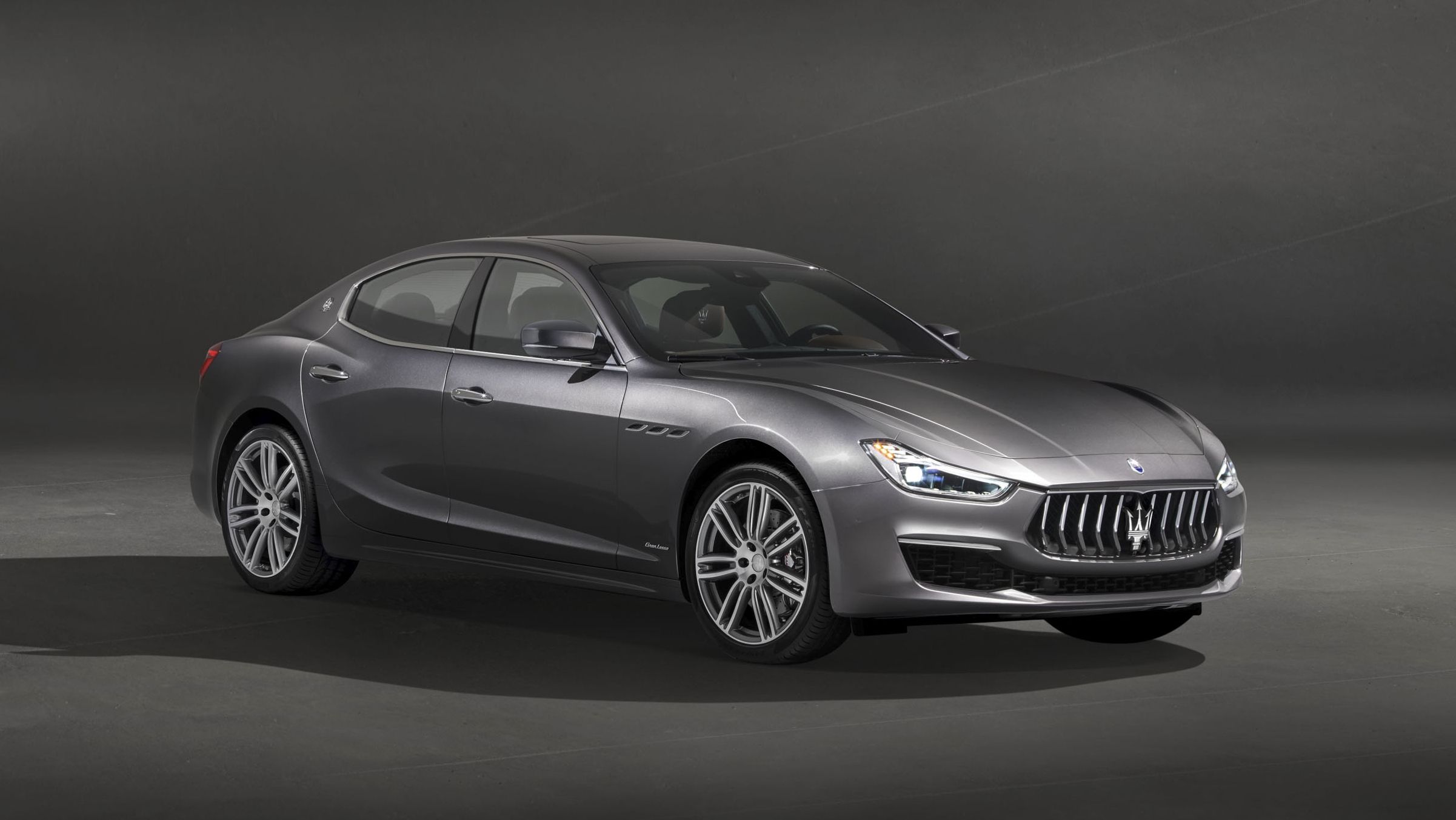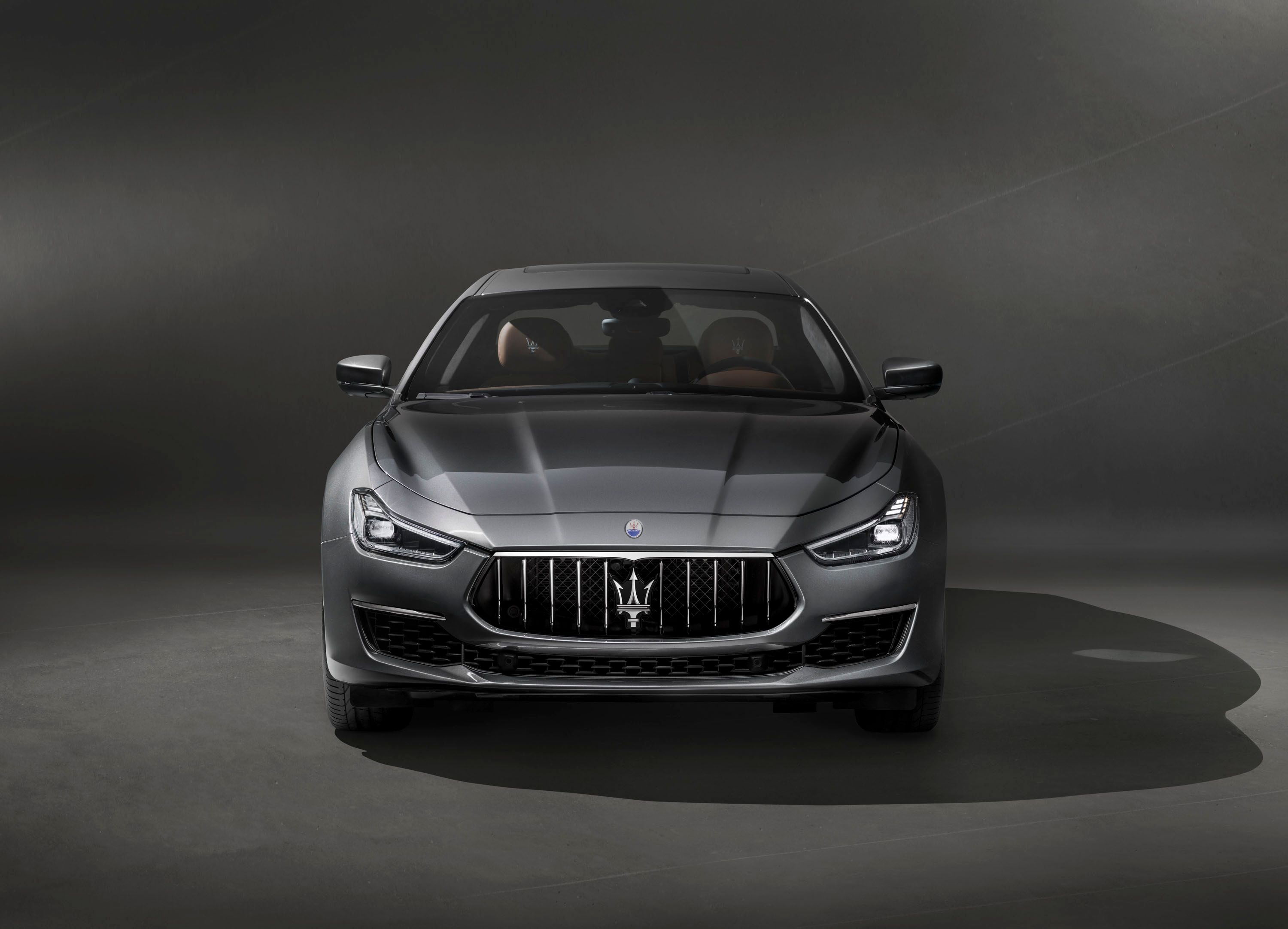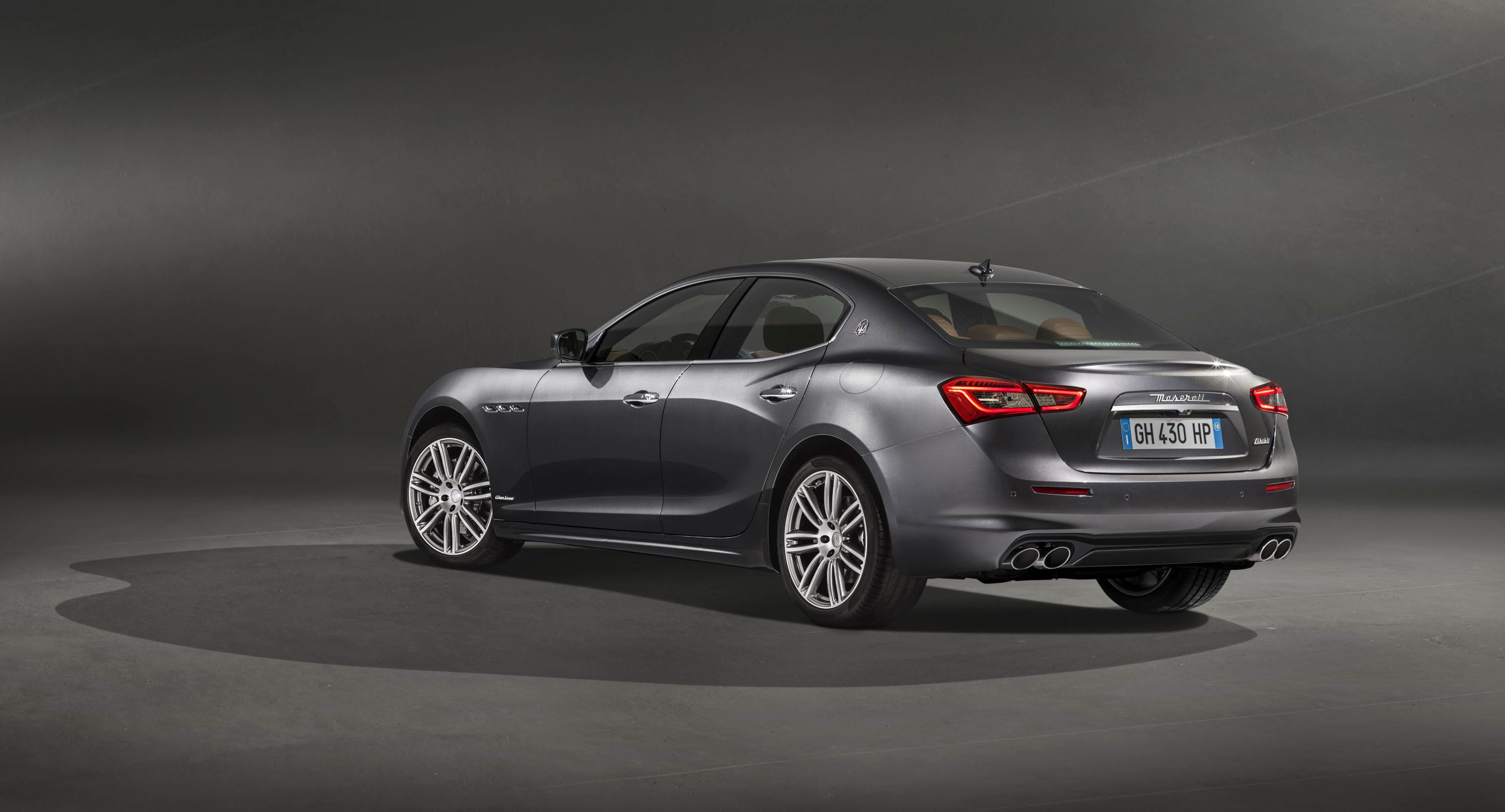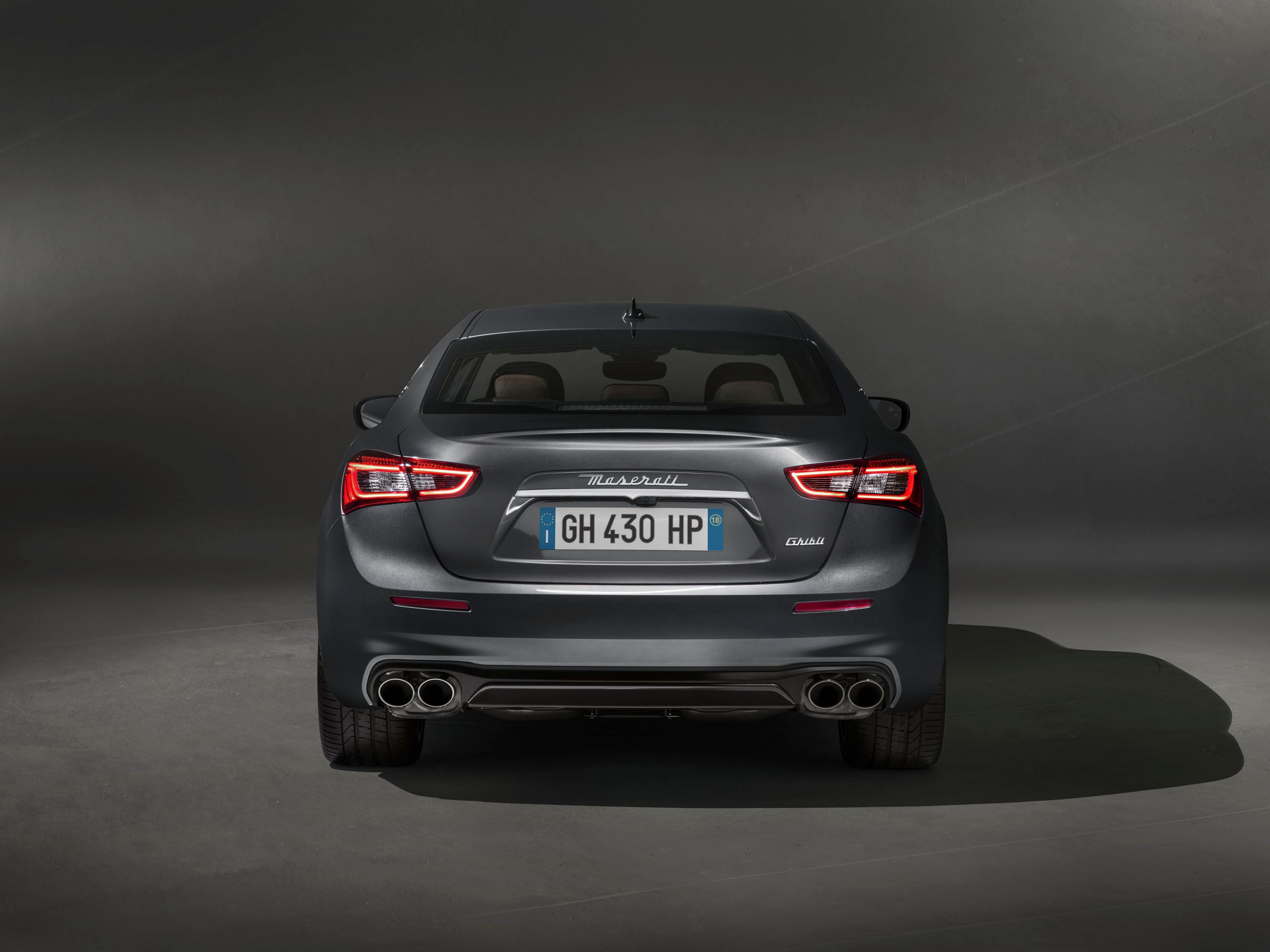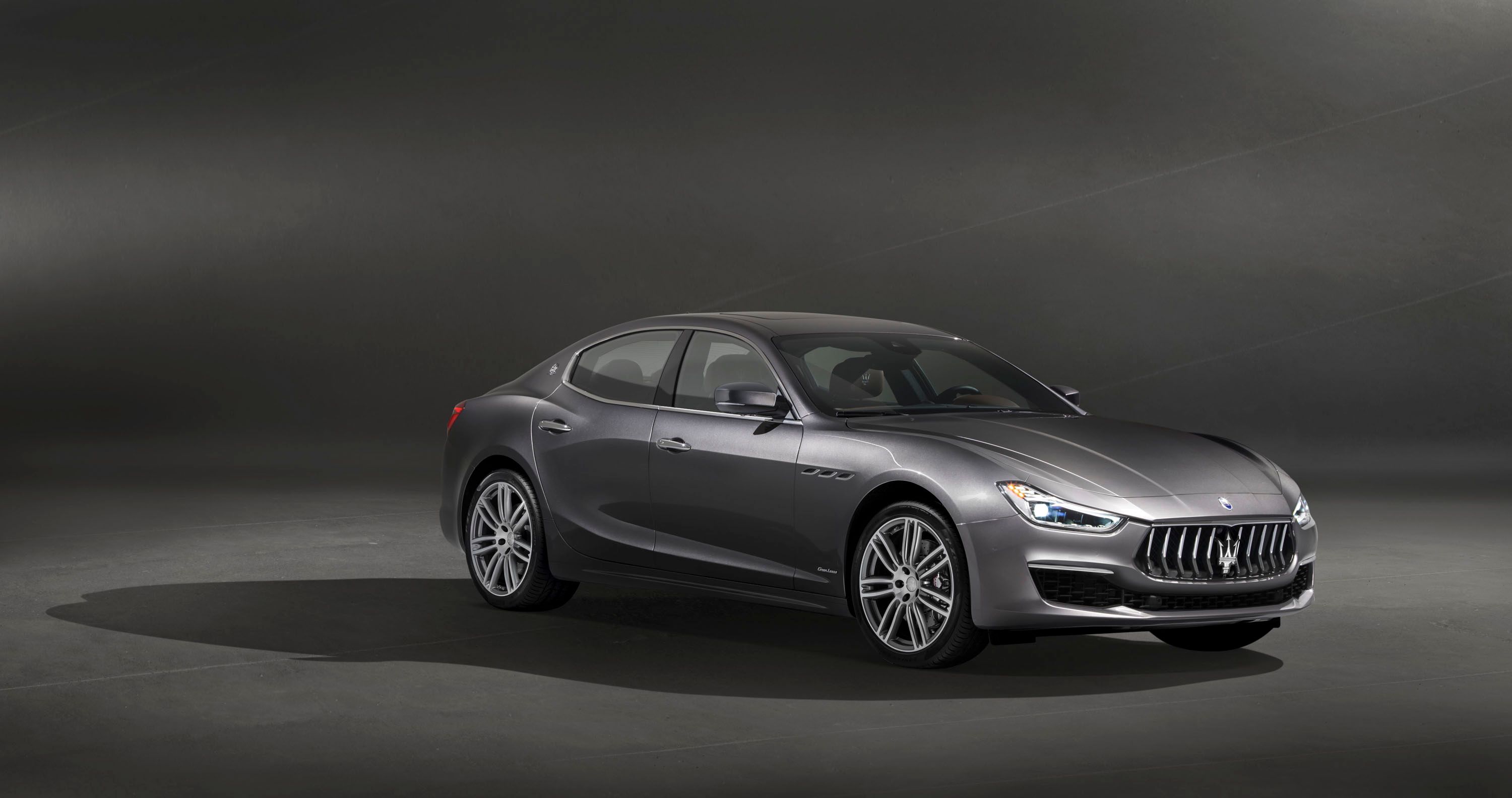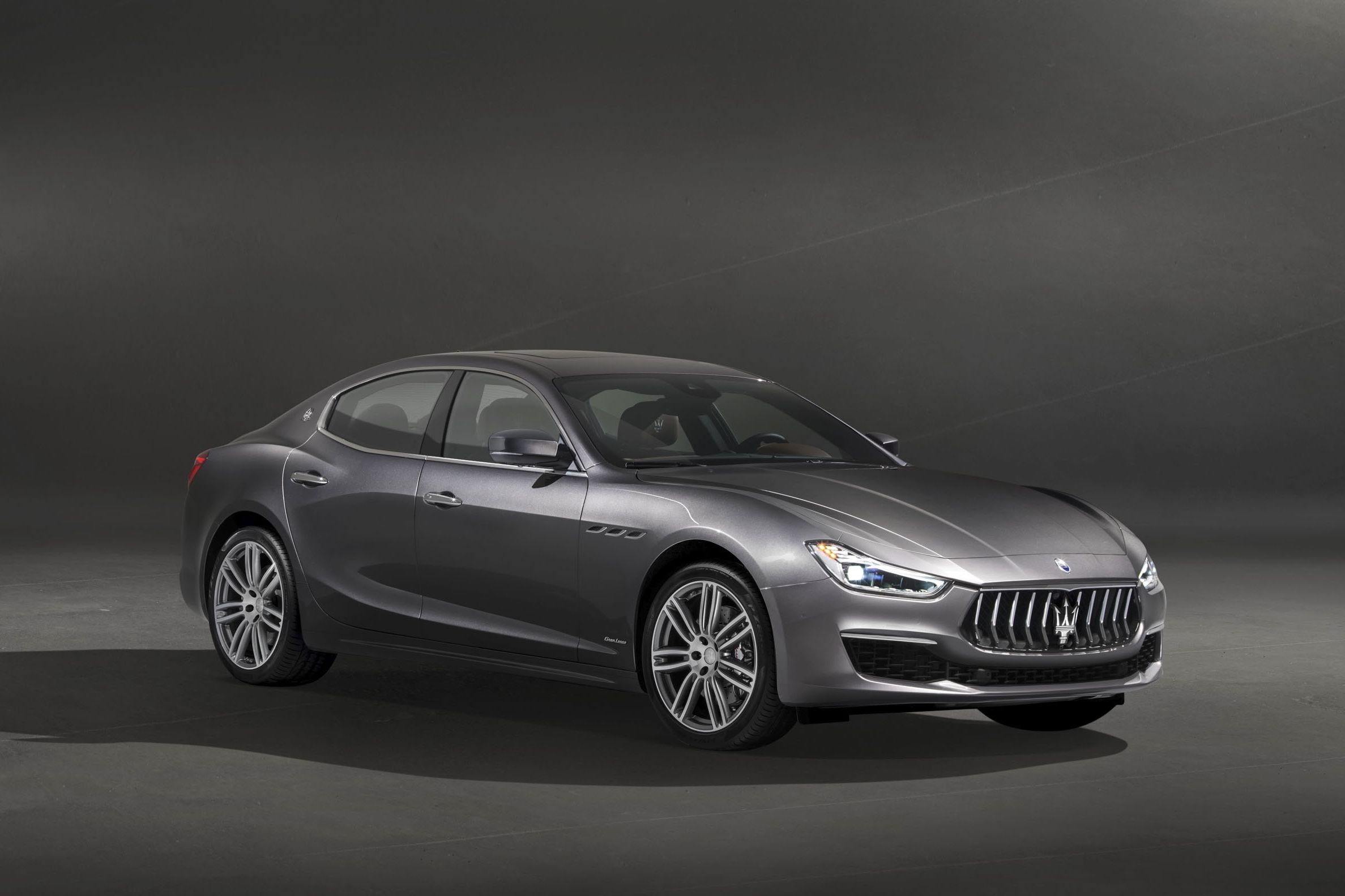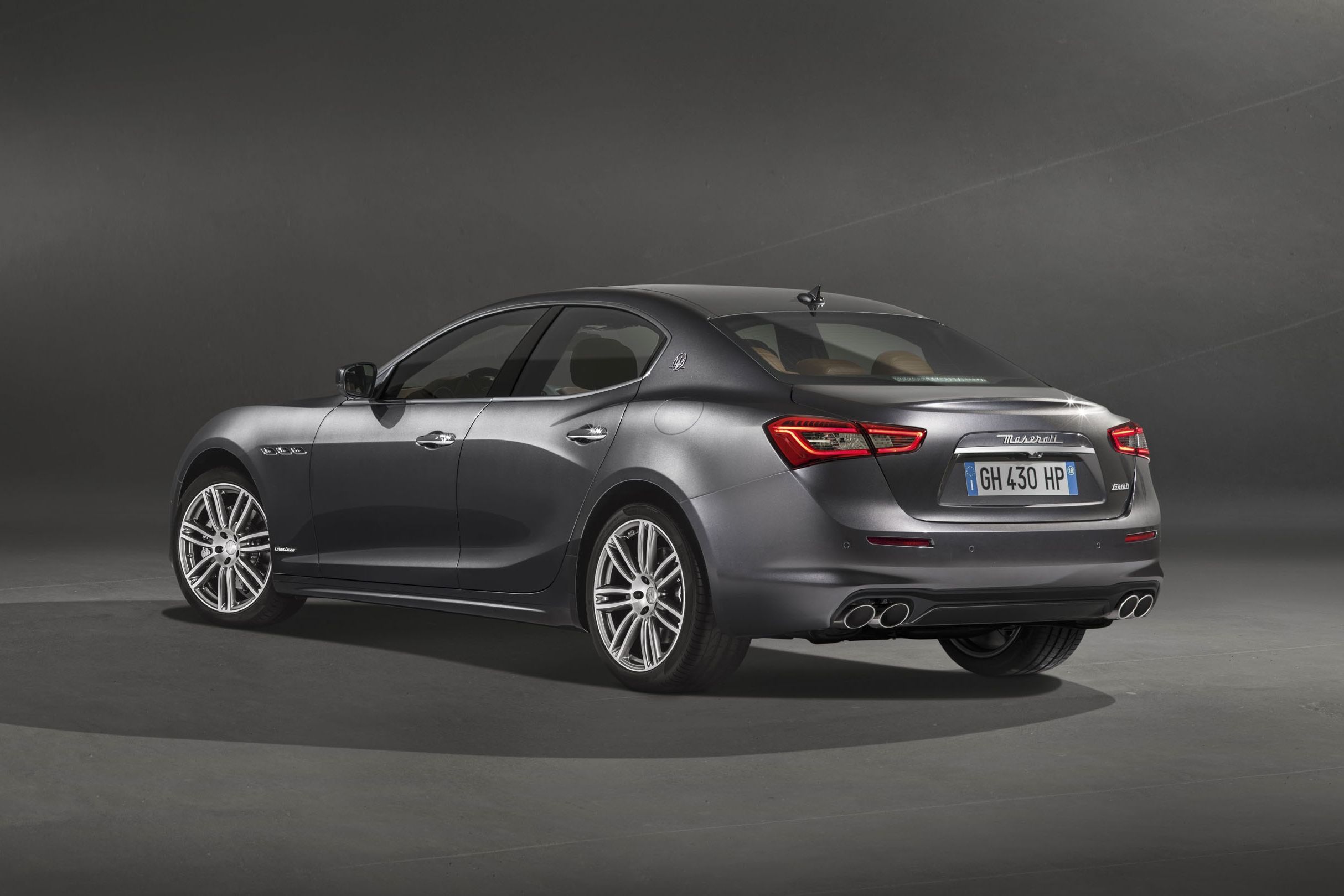Introduced in 2013, the Ghibli became Maserati's second four-door sedan. Smaller than the Quattroporte, it was developed as a competitor for the BMW 5 Series and Mercedes-Benz E-Class. It's also the first sedan that slots under the Quattroporte since the four-door version of the Maserati Biturbo was discontinued in 1994. The Ghibli name was revived after a 15-year hiatus, but it's the first time when it's being used on a four-door sedan, as both the first- and second-generation models, produced between 1967-1973 and 1992-1998, were offered as two-door coupes and convertibles only. After four years on the market, the third-generation Ghibli received its mid-cycle facelift.
In a strategy that reminds of Ferrari, the Ghibli was renamed the Ghibli GranLusso. The "GranLusso" isn't new though, as Maserati is already using in on a trim level of the upgraded Quattroporte. The revised sedan made its debut at the Chengdu Motorshow in China with updated bumpers and side skirts, improved aerodynamics, and new features. The drivetrains carry over unchanged, but this is far from surprising given that both the GranTurismo and Quattroporte didn't get engine upgrades with their facelifts. Still, there's plenty of changes to talk about, so join me in my review for the full rundown.
Continue reading for the full story.
2018 Maserati Ghibli GranLusso
- Make: Array
- Model: 2018 Maserati Ghibli GranLusso
- Engine/Motor: V6
- Horsepower: 345 @ 5250
- Torque: 369 @ 1750
- Transmission: eight-speed automatic
- [do not use] Vehicle Model: Array
Exterior
Design changes to the Ghibli are far from radical, but they bring the sedan in line with the updated Quattroporte. The most noticeable change is the main grille, which is a tal larger and sports new vertical slats. The upper section also gained a thicker chrome stripe that gives the front fascia a more elegant look.
The headlamps were carried over unchanged in terms of size and shape, but now they feature adaptive full-led technology and glare-free Matrix High-Bean. The light cluster also looks different, with rectangular LED spots and thin stripes toward the outer edges. Below, Maserati reshaped the intake, changed the mesh, and added chrome trim for a more upscale look, just like seen on the GranLusso version of the Quattroporte.
Moving to the sides, changes are limited to body-colored side skirts and "GranLusso" badges on the front fenders. Around back, there's a new bumper. Unlike the previous versions, the side are also body-colored, while the diffuser-like element looks sportier.
Although there are no specific figures to run by, Maserati claims that these design changes enhance the Ghibli's aerodynamic efficiency.
Interior
Note: standard Maserati Ghibli interior shown here.
Maserati had nothing to say about the interior of the facelifted Ghibli, so it's safe to assume that the update brings nothing new. That's not necessarily an issue, because the sedan's interior is still gorgeous to look at and has enough technology to keep up with the competition. Granted, it doesn't come with the semi-autonomous features of the Mercedes-Benz E-Class and the new BMW 5 Series, but the new ADAS package adds features like Rear Cross Path with Blind Spot Alert, Forward Collision Warning, Adaptive Cruise Control, Lane Departure Warning, and a new-generation Rear View Camera.
Standard equipment includes dual-zone climate control and rain-sensing wipers, and two audio systems are available including a 15-speaker Bowers & Wilkins set-up. There's also DAB, SD card for audio input and USB, and aux-in connectivity.
Highlights in the Ghibli include a modern dashboard that brings together old-school analogue dials and a digital display, a large, 8.4-inch touchscreen in the center stack, and premium appointments all over the place, including optional fine-grain leather. However, Maserati needs to deal with some of the complaints coming from customers, such as cramped legroom for tall passengers and some issues with the infotainment system, like not being able to pair a Bluetooth phone while moving and an unstable connection.
Drivetrain
Note: standard Maserati Ghibli engine shown here.
Nothing changed under the hood, but this isn't really an issue. The Ghibli benefits from a diverse drivetrain lineup that includes both diesels and gasoline offerings, so customers have access to both fuel efficiency and higher performance.
The twin-turbo, 3.0-liter V-6, which was co-developed with Ferrari, can be had in three flavors. The base engine cranks out 345 horsepower and 369 pound-feet of twist. Paired to a ZF eight-speed automatic that sends power to the rear wheels, it enables the sedan to hit 60 mph in 5.5 seconds. Top speed is rated at 163 mph. Next up is the 404-horsepower and 406-pound-feet version. With this engine and the same transmission, the 0-to-60 mph sprint drops to 4.9 clicks, while top speed jumps to 177 mph.
The range-topping model, dubbed S Q4, comes with the same output, but the ZF gearbox spins all four wheels. As a result, 60 mph comes in only 4.6 seconds, while top speed is limited to 176 mph.
Maserati also a 3.0-liter V-6 turbo-diesel, the first oil burner to power a Trident-badged vehicle. The global unit cranks out 271 horsepower and 420 pound-feet of torque and needs 6.2 seconds to hit 60 mph before topping out at 155 mph. However, the Italian market also gets a 247-horsepower and 420-pound-feet version that hits 60 mph in 6.6 seconds and hits a top speed of "only" 149 mph.
I guess I could criticize Maserati for not offering a proper performance version to go against the Mercedes-AMG E63 and BMW M5, but other than that, the Ghibli covers just about every spectrum of the market.
|
Engine Layout |
3.0 L Twin-Turbo V6 (60°) |
3.0 L Twin-Turbo V6 (60°) |
|
Max. power output (HP @ RPM |
345 @ 5,250 |
404 @ 5,500 |
|
Peak torque (LB-FT @ RPM) |
369 @ 1,750 |
406 @ 1,750 |
|
Transmission |
ZF Eight-Speed Automatic |
ZF Eight-Speed Automatic |
|
Top speed |
163 MPH |
177 MPH |
|
Acceleration (0-60 MPH) |
5.5 Sec. |
4.7 Sec. |
Prices
Pricing information is not yet available, but the facelift shouldn't bring a significant premium. The current lineup starts from $72,300, while the Ghibli S retails from $78,000. The range-topping Ghibli S Q4 fetches $80,500 before options.
Competition
Mercedes-Benz E-Class / AMG E43
Launched for the 2017 model year, the current E-Class is one of the most popular sedans in the midsize market. Heavily based on the larger S-Class inside and out, the E-Class is both sporty and elegant, while its luxury features and technology are far superior to the Ghibli's. It also has Drive Pilot and Steering Pilot, two functions that enable the E-Class to act like a semi-autonomous vehicle. It also comes with the world's first fully integral Car-to-X solution, which allows the E-Class to exchange information with other vehicles on the road. The German sedan is available with a range of drivetrains, but the U.S. market is currently limited to the E300, which uses a 2.0-liter four-cylinder rated at 241 horsepower and 273 pound-feet of torque. This model needs 6.3 seconds to hit 60 mph while adding AWD shaves a tenth-second off the benchmark. As an alternative to the Ghibli S Q4, Mercedes offers the AMG E43. Using a turbo 3.0-liter V-6, this version delivers 396 horsepower and a 0-to-60 mph sprint of only 4.5 seconds. Needless to say, Maserati has a lot of catching up to do with the next-generation Ghibli. Pricing for the base E-Class starts from $52,950, while the AMG E43 retails from $71,600. The latter is about $9,000 more affordable than the Ghibli S Q4!
Read our full reviews of the Mercedes-Benz E Class and Mercedes-AMG E43.
BMW 5 Series / M550i xDrive
Having trailed behind the E-Class for a while, the 5 Series received is much deserved redesign for the 2018 model year. Although the styling is decidedly evolutionary, the sedan looks fresh and the sporty looks take it closer to the Ghibli's GranTurismo-inspired styling. As usual, the interior is packed with premium features and BMW's latest technology, including the ability to act as a semi-autonomous vehicle. In terms of drivetrain, there's something for every need. The base 2.0-liter four-pot cranks out 248 horsepower and 258 pound-feet of torque, while the 3.0-liter six-cylinder is rated at 335 horses and 332 pound-feet. Charging to 60 mph takes between 4.7 and 6.0 seconds, depending on configuration. More oomph can be had from the M550i xDrive model, which comes with 456 horsepower and 480 pound-feet on tap plus a 0-to-60 mph sprint in only four seconds. Pricing starts from $51,200 for the four-cylinder model and from $56,450 for the six-cylinder. The M550i retails from $73,400, significantly less than the Ghibli S Q4, but with extra power and quicker sprints.
Read our full reviews of the BMW 5 Series and BMW M550 xDrive.
Conclusion
While the Ghibli was a great way for Maserati to expand its sedan lineup for the first time in decades, it's not the kind of vehicle that threatens the competition. Sure, it helped increase company sales and paved the way to the Levante SUV, but it's not yet seen as a proper competitor for the Mercedes-Benz E-Class and the BMW 5 Series. For starters, it's significantly more expensive. And while this is a feat that comes with every Maserati, it doesn't bring more luxury or more power. Take the range-topping S Q4. For a lot less, you can buy the new Mercedes-AMG E43 or the BMW M550 xDrive, both of which have better technology, more power, and are significantly quicker. So until Maserati fixes this -- and gives the Ghibli a better ride and power-to-weight ratio -- this Italian sedan pretty much competes in a niche of its own.
References
Maserati Ghibli
Read our full review on the Maserati Ghibli.
Maserati Quattroporte
Read our full review on the Maserati Quattroporte.

